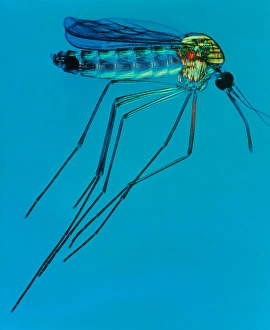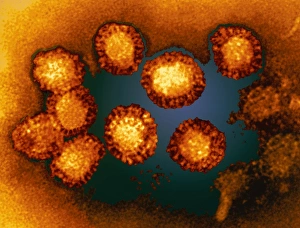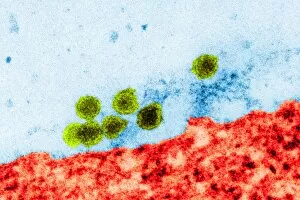Encephalitis Collection
"Encephalitis: Unveiling the Mysterious Brain Infection" Meet the young Cretin from Valais, whose tragic story sheds light on encephalitis
All Professionally Made to Order for Quick Shipping
"Encephalitis: Unveiling the Mysterious Brain Infection" Meet the young Cretin from Valais, whose tragic story sheds light on encephalitis, a debilitating brain infection. Illustrated in a book by Baron Jean Louis Alibert (1768-1837), this captivating image captures the essence of this condition. Delving deeper into its origins, we encounter stylized rabies virus particles that are closely associated with encephalitis. These conceptual images of the rabies virus provide us with an insight into its structure and how it affects our brains. Moving forward, we explore another conceptual image itself – a haunting representation that symbolizes the havoc it wreaks upon our central nervous system. This visual depiction serves as a reminder of the severity and impact this disease has on individuals affected by it. Continuing our exploration, we come across various other viruses linked to encephalitis. The lyssavirus and Henipavirus are microscopic villains responsible for causing this neurological disorder. Their molecular structures captured under microscopic view offer valuable insights into their composition and potential treatment strategies. Notably, VEE equine encephalitis virus capsid takes center stage as yet another culprit behind this condition's occurrence. Its intricate design highlights both its complexity and significance in understanding how these viruses invade our brains. Lastly, Mengovirus capsid presents itself as a molecular model that further deepens our comprehension of viral infections leading to encephalitis. By studying such models meticulously, scientists strive to develop effective therapies against these relentless pathogens. Through captivating illustrations and conceptual images showcasing various viruses like rabies virus particles or Henipavirus associated with encephalitis, we gain invaluable knowledge about this mysterious brain infection. As researchers continue their quest for answers and treatments against these formidable foes invading our minds, hope remains alive for those affected by encephalitis worldwide.
















